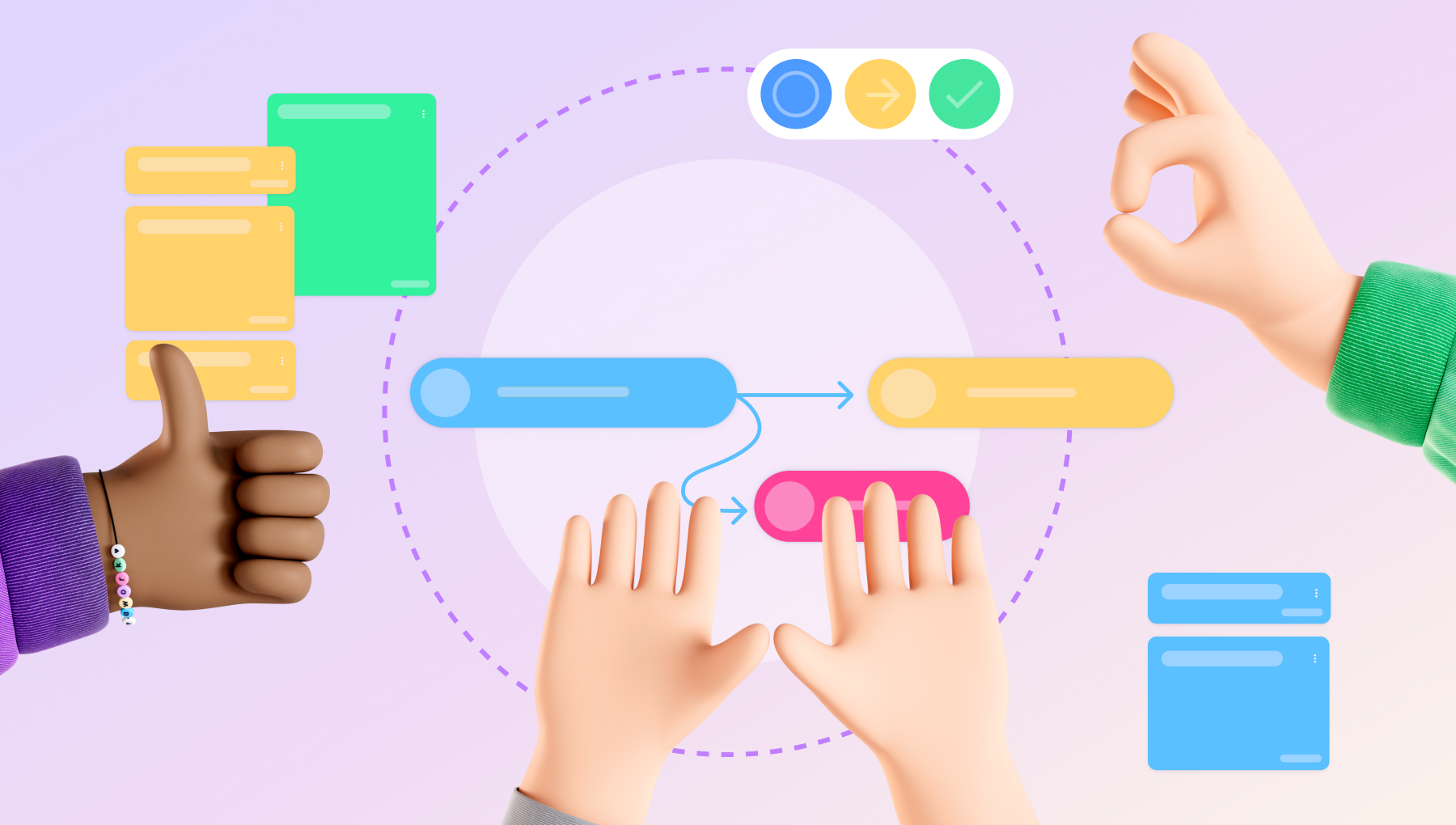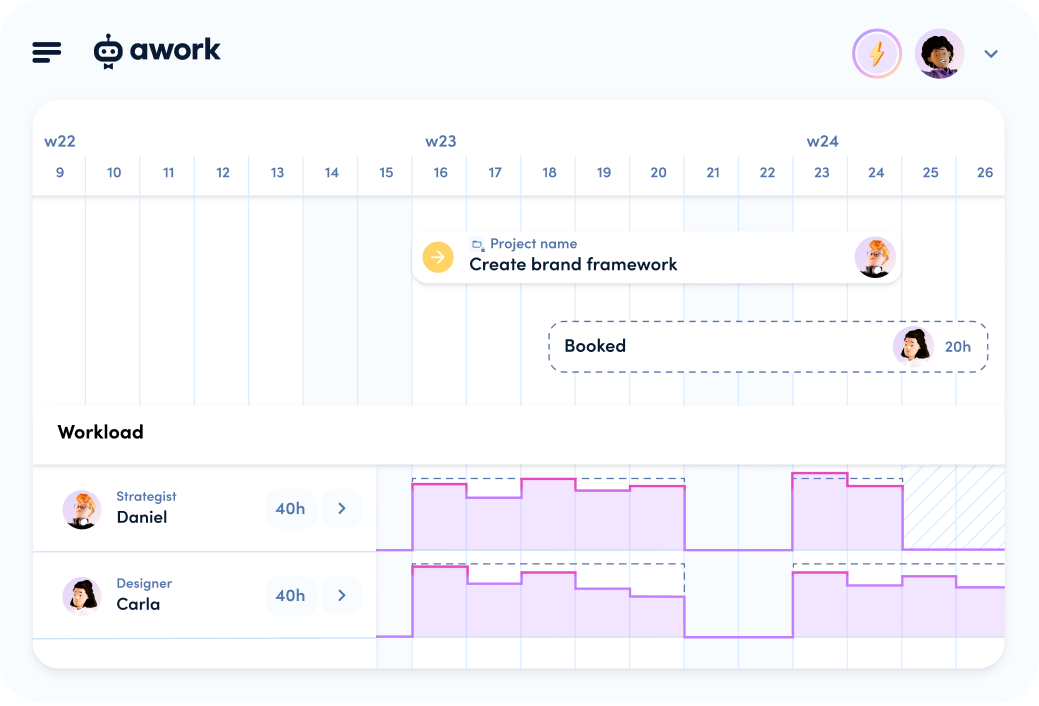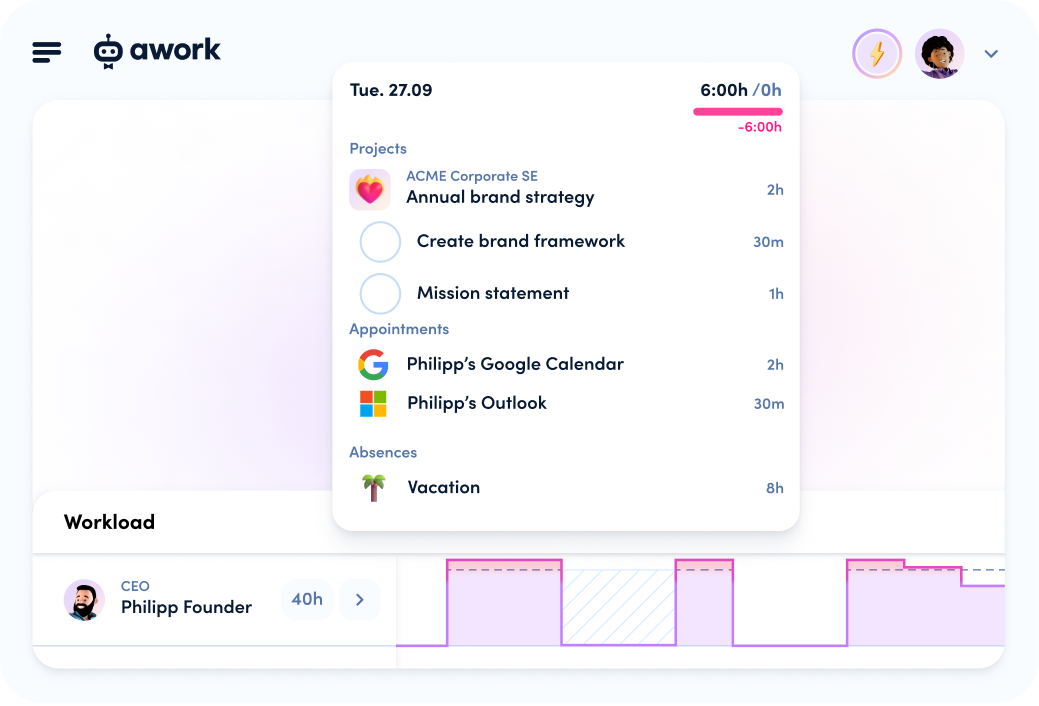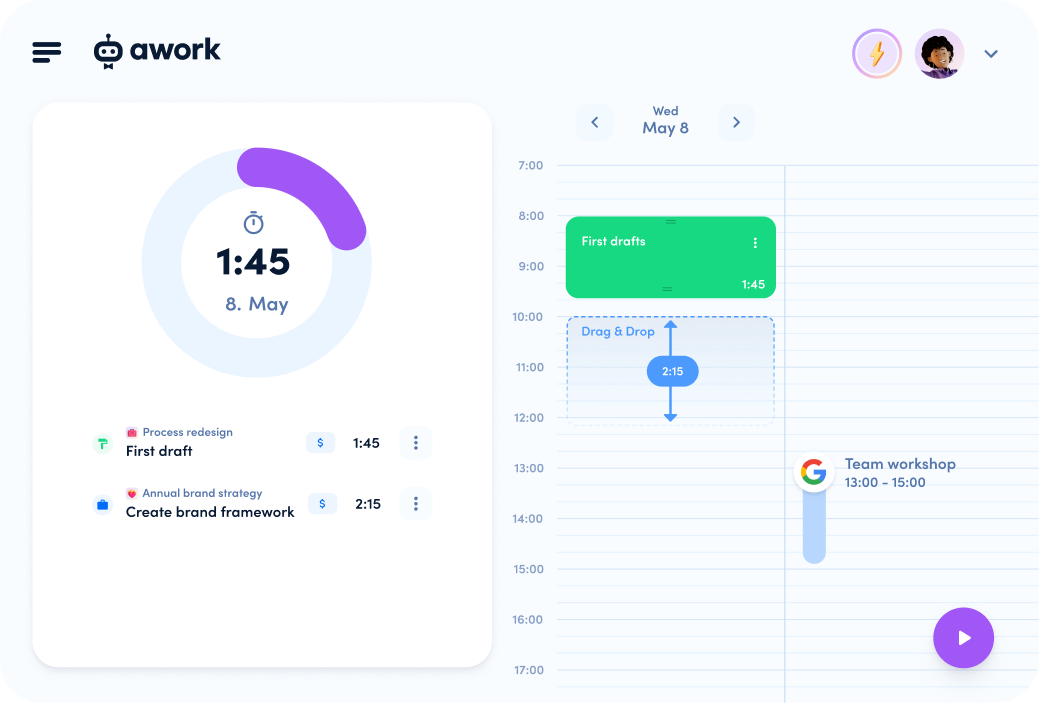You start your day with a clear to-do list, but before you can even tick off the first item, the phone rings. A team member is sick and suddenly an important part of the project is up in the air. At the same time, you open Slack and a customer asks for an urgent meeting - just because of "a few small adjustments". Your well-organized day quickly turns into a jumble of urgent requests and unexpected challenges.
How often have you found yourself in these or similar situations in project management and wished there was a better way to deal with surprises in day-to-day project work? This is where agile project management comes into play.
What does "agile" mean in project management and how can it help your team work more efficiently and happily? Let's take a look at this together.
What is agile project management?
By definition, agile project management is a method that originally comes from the IT sector and software development. Instead of planning everything down to the smallest detail and then stubbornly following through, you and your project team work in short cycles - so-called sprints, which are often used in the Scrum method. Agile methods also include Kanban. This technique helps you to always keep an overview and move forward smoothly without getting lost in the details. Or design thinking: you can come up with creative ideas by really putting yourself in the users' shoes. The agile methods then give you the freedom to react flexibly to adaptations.
These are the advantages of agile project management:
👉 Flexibility: You are always ready to change the plan if the project or customer requirements make this necessary.
👉 Iterative improvements: After each work cycle, you look at what's going well and what's not - and adjust the project accordingly.
👉 Transparency in the team: everyone has access to the latest information on the project status. This reduces misunderstandings, improves decision-making within the team and makes the workflow smoother.
👉 Collect feedback: You collect feedback from customers and project participants regularly and at shorter intervals to ensure that the project meets their requirements. This way, you don't have to throw everything overboard at the end.
👉 Faster results: Because you work in short sprints, you see results faster. This not only motivates the team, but also makes customers happy.
👉 Clever handling of risks: Instead of everything blowing up in your face in the end, you see problems early on and can iron them out. This avoids the big mess.
👉 Better team spirit: you all pull together. This not only makes work easier, but also strengthens the team spirit.
Traditional vs. agile project management: what's the difference?

Imagine a quick road trip. 🚗 With classic project management (keyword: waterfall method), you would determine the entire route in advance, plan every stop and book it right away. And without the option of spontaneously taking a detour if you discover something interesting along the way. The problem with this is that you have no flexibility. What happens if a road is closed or you find a place where you would like to spend more time? This is where traditional project management reaches its limits.
With agile project management, you have a direction and a final destination in mind for your road trip. At the same time, you are open to new routes and adventures that arise along the way. You make regular stops, check your direction, adjust it if necessary and continue your journey. This allows you to react flexibly to unforeseen events and collect the best memories on your trip.
[.b-important-block]This is what makes agile project management so valuable: it allows you to regularly incorporate feedback and make changes in good time so that the project truly meets the current customer needs and requirements.[.b-important-block]
[$tag]👉 Good to know[$tag]
5 examples of agile project management
Let's take a look at some examples of where agile project management is frequently used:
1. Relaunching a website:
This is where team members and skills from very different areas come together. Only when the design is finalized can the DEVs really get started and estimate how much work the whole thing will take.
2. Developing a mobile app:
When teams build a new app, they often divide the work into short phases. This allows them to add new functions bit by bit, try out what users like and then improve it directly. They can react quickly to new user requests or changes in the market.
3. Marketing campaigns:
Marketing teams are also increasingly relying on agile working. This means that the team tries out different ideas in quick rounds, checks how people react to them - and then adapts the campaigns. This makes the entire campaign more flexible and usually also more successful.
[.b-related-article]Try the awork template for campaign planning[.b-related-article]
4. Software development projects:
Software development works in a similar way. Here, the team develops new features in short cycles, tests them directly with the users and then improves them with their feedback. Agile methods such as Scrum help to ensure that everyone in the team works closely together and exchanges information regularly in order to improve the software step by step.
5. Product development:
The development of new products is also quite agile. Instead of planning for a long time, the team builds a prototype, tests it with real users and then improves it directly. This results in products that really meet users' tastes - and faster than with traditional project management approaches.
You 🤝 agile project management: does the working method suit your challenges?
There are plenty of challenges in the everyday life of project managers. If you are aware of the following surprises, for example, agile project management is your perfect match:
- Last-minute changes: The customer suddenly has a "small" change that actually turns everything upside down. Instead of burying your head in the sand, you smoothly introduce the changes using the agile project management approach.
- Unclear customer requirements: "I know the right design when I see it", says the customer, leaving you with desperate creatives. With the agile concept, this is how things will work in future: Through sprints and regular feedback and coordination with the customer, you realize the ideas step by step. Without night shifts and "producing 99 designs for the garbage can".
- The deadline is approaching, the team is overwhelmed: Everyone knows the rising pulse when the deadline is just around the corner but there is still a mountain of work in the inbox. With agile methods, you can work on the project step by step and without being overwhelmed. The most important aspects are prioritized in an agile way in order to be able to implement everything necessary for the deadline.
- There are bottlenecks in the team: thanks to the agile method, there are no bottlenecks and the tasks are simply distributed among the free capacities in the team. This means there is no more typical "But ONLY Carla can do that".
- Lurking sources of error: In traditional project management, errors are often only discovered when they are there and have to be ironed out at great expense. With agile project management, you can identify and avoid problem icebergs at an early stage - through regular reviews and tests in every work cycle.
- Communication in the team gets bumpy: Misunderstandings within the team can cause projects to stumble. With agile project management, you regularly get all employees on board and everyone knows how the project is going.
[.b-important-block]In practice, agile project management gives you the tools to skilfully deal with everyday challenges - from unexpected change requests to tricky customer requirements.[.b-important-block]
[$tag]👉 Good to know[$tag]
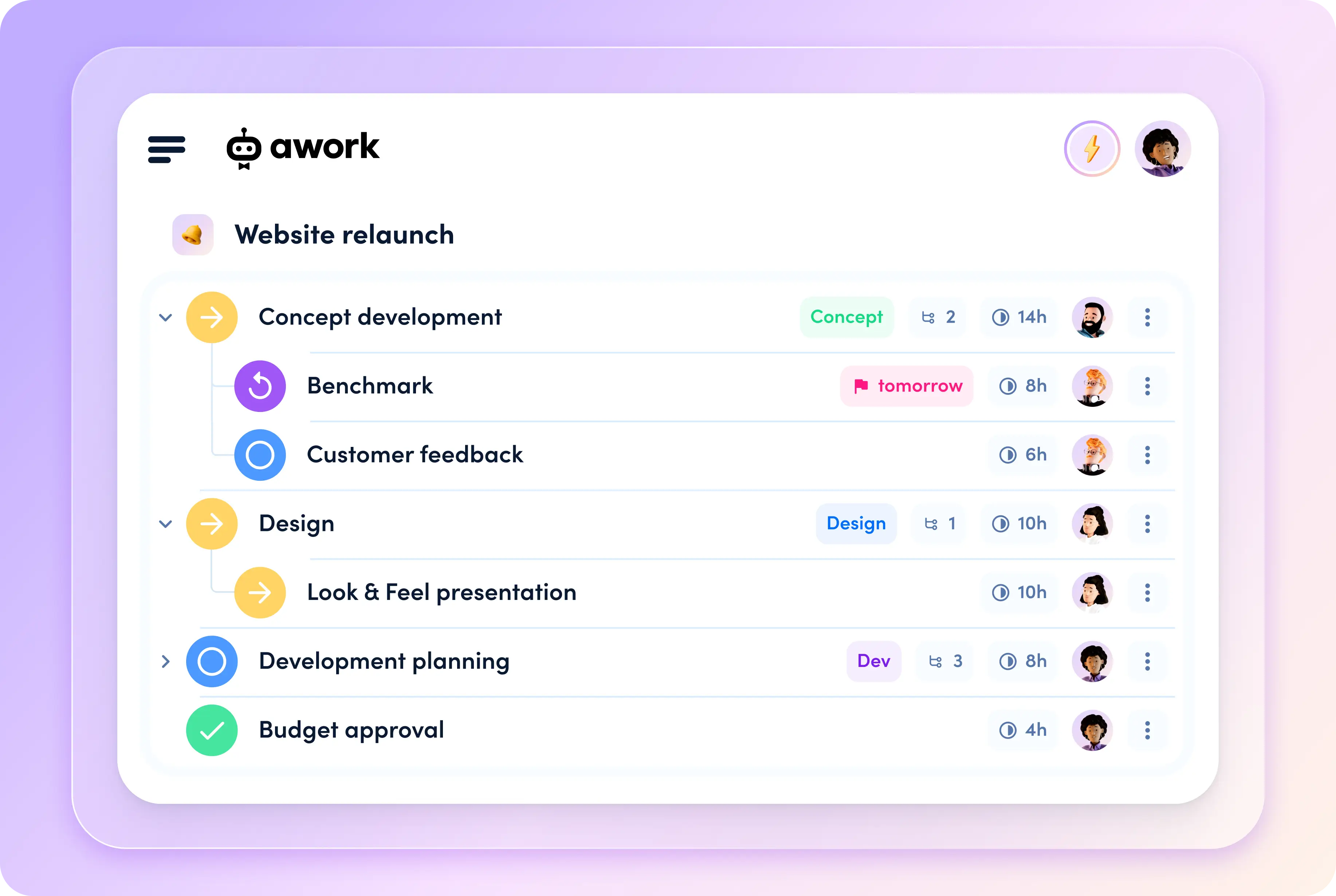
How awork simplifies your agile project management
awork firstly supports agile methods, secondly supports you so that everything runs stress-free and thirdly supports you again when your day unexpectedly turns upside down.
[.b-testimonial]With so many projects running simultaneously, we need awork because it perfectly adapts to our own workflow.[.b-testimonial]

awork features for agile working:
- React quickly to changes: You'll never feel like you're losing track again. awork shows you where your project stands with an easy dashboard and allows you to adjust priorities with just a few clicks.
- Collaboration that's fun: everyone in the team can see which to-dos are coming up next and comment directly in the tasks. This often makes meetings superfluous and keeps everyone up to date.
- Deadlines and tasks under control: With awork, you can easily adjust deadlines and tasks. This means less stress for everyone.
- Visualize your projects: With the board view, you can move tasks around like on a playing field. You can always see who is doing what and which moves need to be made. In addition, the timeline view keeps an eye on the home stretch so that you can keep track of deadlines and the progress of your projects.
- Quick start with templates: awork offers you clever templates for various todos so that you can get started faster. You also have the option to save and reuse your own templates, which further simplifies project work.
- Quick and easy onboarding: New team members don't need any special onboarding training either, but can work directly on their own projects

You + awork + agile project management methods = 💜
If you work in project management at an agency, consultancy or IT company and are tired of just somehow dragging your projects to the finish line, awork is your tool2be. It helps you and your team with agile project work, makes your workflows faster, project planning plus task management more precise and processes smoother.
With awork, you can keep track of your projects, optimize resource management and increase the productivity of your team. The tool promotes clear communication within the team and with everyone involved, so that everyone always knows exactly what needs to be done.
Would you like to try out awork as an agile project management tool? Then click here for the free trial version.
[.b-button-primary] Curious? Try awork for free! [.b-button-primary]


.webp)



